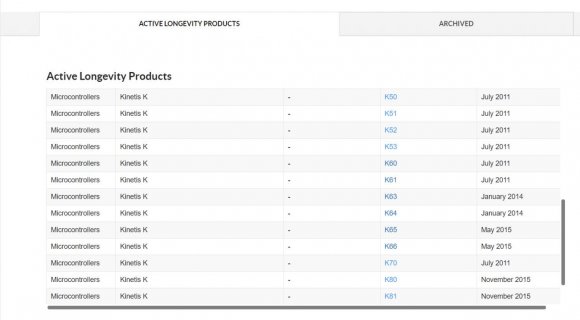This is not a technical question, but more of a question about using Teensy in projects that, perhaps, might be still reproduced in ten years time.
The Atmega328p is underpowered by modern standards, but it has the advantage of being so ubiquitous that I am fairly certain that in 10 years time, they will still be available. I have implemented projects with 32-bit ARM processors (see http://jumentum.sourceforge.net/) and my frustration is that there is such a proliferation of 32-bit processors, that few are likely to be available in the future. Each processor has its own quirks and changing it over to a new one would likely be a large hassle.
Is the processor on the Teensy 3.5 going to be available into the future? Is there any indication that the company selling it is going to keep producing it? One of the benefits of open-source software is the "recyclability" of its components, and if I put in a big effort, I would like the effort to be good for many years for others who follow. One of the benefits of the AVR is that it is so well established it seems like its not going to go anywhere, like the 8051.
Thanks,
Dan
The Atmega328p is underpowered by modern standards, but it has the advantage of being so ubiquitous that I am fairly certain that in 10 years time, they will still be available. I have implemented projects with 32-bit ARM processors (see http://jumentum.sourceforge.net/) and my frustration is that there is such a proliferation of 32-bit processors, that few are likely to be available in the future. Each processor has its own quirks and changing it over to a new one would likely be a large hassle.
Is the processor on the Teensy 3.5 going to be available into the future? Is there any indication that the company selling it is going to keep producing it? One of the benefits of open-source software is the "recyclability" of its components, and if I put in a big effort, I would like the effort to be good for many years for others who follow. One of the benefits of the AVR is that it is so well established it seems like its not going to go anywhere, like the 8051.
Thanks,
Dan


